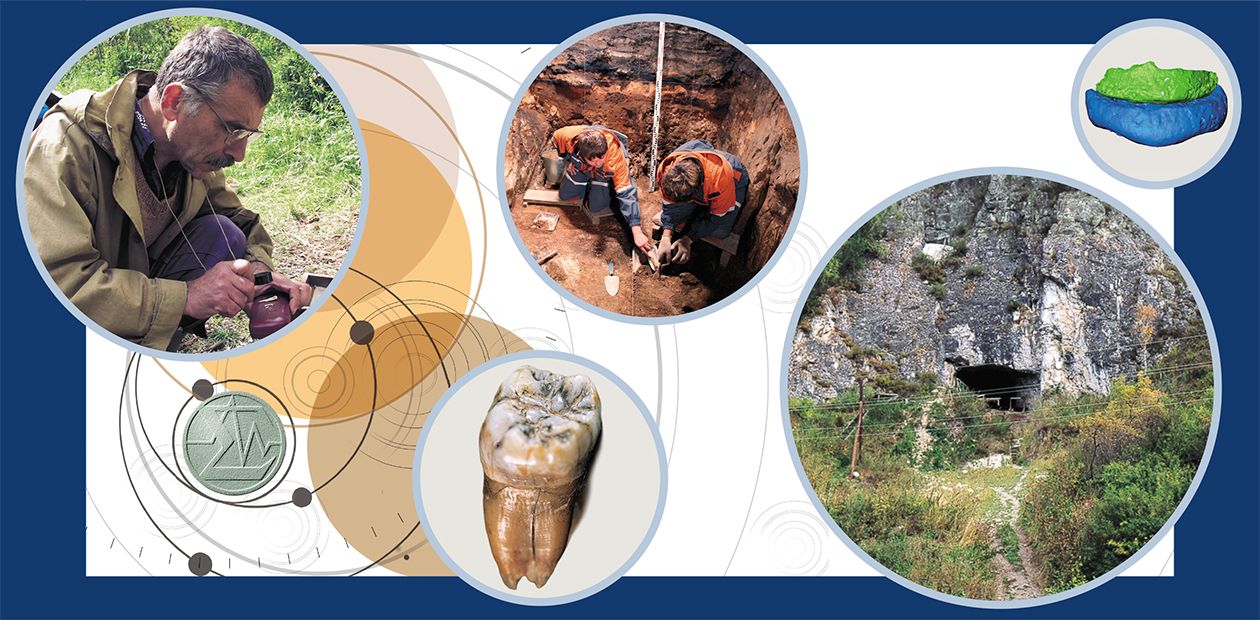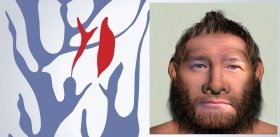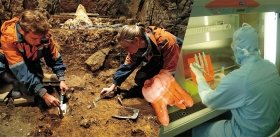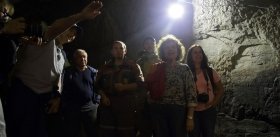Homo Altaiensis?
Scholars from the Institute of Archaeology and Ethnography SB RAS (Novosibirsk) together with paleontologists from the Max Planck Institute for Evolutionary Anthropology (Leipzig) have established that the finger bone found in the Early Upper Paleolithic (40,000—30,000 years ago) occupation layer in Denisova Cave of the Altai Mountains belonged to a human whose mitochondrial DNA is distinct from the mtDNAs of Neanderthals and anatomically modern humans
Excavations at Denisova Cave – one of Russia’s best-known archaeological monuments – have been carried out for long. The dozens-meter-thick deposits formed over the millennia contain a great many traces of human activities dated from the Middle Paleolithic to Middle Ages1.
The lowermost layers have revealed stone tools of the Early Middle Paleolithic. According to geochronological data, these layers are aged from 282,000 до 155,000 years. They are overlaid by the occupation layers of typical Middle Paleolithic industry. Above them are layers that contain Upper Paleolithic artifacts including bone tools, needles and decorations characteristic of anatomically modern humans. The uppermost deposits indicate that the cave was inhabited by ancient communities of the Bronze Age, Scythian epoch, Huns and Sarmatians time, and Middle Ages.
Diggings in the cave are a meticulous and laborious work: literally every grain of cubic meters of the earth is washed and seethed so that not a single tiny animal bone or chip of a stone tool escapes archaeologists and paleontologists. Despite these titanic efforts, among the tens of thousands of fossil animal bones and stone and bone artifacts only three teeth of the early man and a little finger phalanx supposedly belonging to a six- or seven- year-old girl have been discovered.
The latter find was sent to Leipzig, where scientists managed to isolate DNA from the bone and work out, from the bits, the complete mitochondrial genome of the ancient inhabitant of Denisova Cave2.
Every region of the genome was reconstructed on the basis of a multitude of DNA fragments read independently. The entire procedure was repeated, using another sequencing method, on the basis of the DNA from another bone segment. A number of properties, such as the average length of the fragments isolated and characteristic changes at their ends, testified that the DNA under study was ancient and contained no later impurities.
The obtained mitochondrial genome of the ancient man was compared with 54 respective genomes of modern humans from all parts of the world, an Upper Paleolithic homo sapiens from the Kostenki-14 site on the Don (aged about 30,000 years), 6 European Neanderthals and 2 Neanderthals discovered by Russian scientists in Teshik-Tash (Uzbekistan) and in Okladnikov Cave in the Altai (only a hundred kilometers from Denisova cave).
Judging by the results of comparison of the mtDNA genome nucleotide sequences, the hominid of Denisiva Cave is twice as distant from anatomically modern humans as the Neanderthals are and, at the same time, is as different from the Neanderthals. Using special mathematical techniques, the scholars have evaluated the time when the evolution lines diverged: one of these led to the Denisova hominid and the other to the common ancestor of sapiens and Neanderthals (it should be emphasized that we are only dealing with mitochondrial genomes, which are inherited maternally). Calculations have shown that the last common progenitrix of these human species lived about a million years ago. For comparison, the last progenitrix of sapiens and Neanderthals lived about 466,000 years ago.
It goes without saying that the analysis of the mitochondrial genome alone, without any data about the nuclear genome and skeleton structure (the little finger phalanx does not count) makes it impossible to say for certain who the Denisova hominid was and how he was related to the sapiens and Neanderthals. Therefore, we cannot state yet that a new human species has been discovered in Denisova Cave.
Nevertheless, it is difficult to overestimate the importance of this discovery: it provides evidence to the effect that the Altai population 30,000—50,000 years ago was genetically varied. Archaeological, geochronological, and now genetic data point to the fact that people belonging to different maternal lines – Neanderthals, sapiens, and the enigmatic “Denisovans” – for long inhabited the same area. In this sense, the results of the genetic study of the Denisova Cave man may support the multiregional theory of human origin, according to which the blood we have in our veins does not belong entirely to the sapiens, who left Africa 60,000 to 80,000 years ago, but to many other species of ancient hominids as well3.
References
1 Derevyanko А. P., Shunkov М. V., Agadzhanyan А. К. et al. Natural environment and humans in the Gorny Altai during the Paleolithic age. Novosibirsk, 2003.
2 Krause J., Fu Q., Good J. M. et al. The complete mitochondrial DNA genome of an unknown hominin from southern Siberia // Nature. 2010. V. 464. P. 894—897.
3 Derevyanko А. P. Middle to Upper Paleolith transition and the problem of Homo sapiens sapiens formation in the eastern, central, and northern Asia. Novosibirsk, 2009.






















